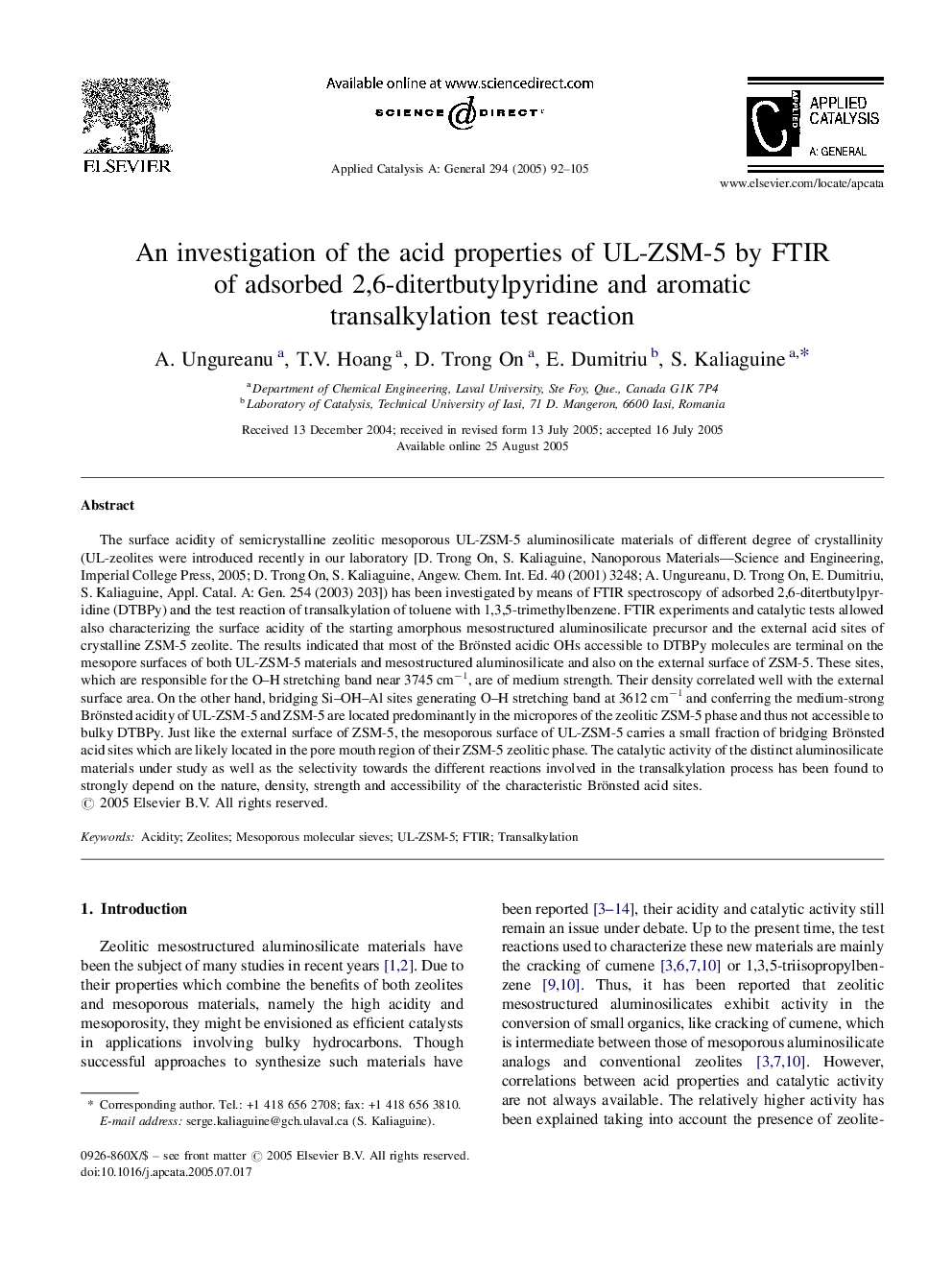| Article ID | Journal | Published Year | Pages | File Type |
|---|---|---|---|---|
| 10239008 | Applied Catalysis A: General | 2005 | 14 Pages |
Abstract
The surface acidity of semicrystalline zeolitic mesoporous UL-ZSM-5 aluminosilicate materials of different degree of crystallinity (UL-zeolites were introduced recently in our laboratory [D. Trong On, S. Kaliaguine, Nanoporous Materials-Science and Engineering, Imperial College Press, 2005; D. Trong On, S. Kaliaguine, Angew. Chem. Int. Ed. 40 (2001) 3248; A. Ungureanu, D. Trong On, E. Dumitriu, S. Kaliaguine, Appl. Catal. A: Gen. 254 (2003) 203]) has been investigated by means of FTIR spectroscopy of adsorbed 2,6-ditertbutylpyridine (DTBPy) and the test reaction of transalkylation of toluene with 1,3,5-trimethylbenzene. FTIR experiments and catalytic tests allowed also characterizing the surface acidity of the starting amorphous mesostructured aluminosilicate precursor and the external acid sites of crystalline ZSM-5 zeolite. The results indicated that most of the Brönsted acidic OHs accessible to DTBPy molecules are terminal on the mesopore surfaces of both UL-ZSM-5 materials and mesostructured aluminosilicate and also on the external surface of ZSM-5. These sites, which are responsible for the OH stretching band near 3745Â cmâ1, are of medium strength. Their density correlated well with the external surface area. On the other hand, bridging SiOHAl sites generating OH stretching band at 3612Â cmâ1 and conferring the medium-strong Brönsted acidity of UL-ZSM-5 and ZSM-5 are located predominantly in the micropores of the zeolitic ZSM-5 phase and thus not accessible to bulky DTBPy. Just like the external surface of ZSM-5, the mesoporous surface of UL-ZSM-5 carries a small fraction of bridging Brönsted acid sites which are likely located in the pore mouth region of their ZSM-5 zeolitic phase. The catalytic activity of the distinct aluminosilicate materials under study as well as the selectivity towards the different reactions involved in the transalkylation process has been found to strongly depend on the nature, density, strength and accessibility of the characteristic Brönsted acid sites.
Related Topics
Physical Sciences and Engineering
Chemical Engineering
Catalysis
Authors
A. Ungureanu, T.V. Hoang, D. Trong On, E. Dumitriu, S. Kaliaguine,
